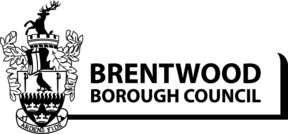Agenda item
Ingatestone and Fryerning Neighbourhood Plan (2020-2033), Regulation 15
Minutes:
The 2011 Localism Act introduced new powers for local communities to produce neighbourhood plans, which can be used to guide and shape future development in an area. Once adopted a neighbourhood plan forms part of the statutory Development Plan for the area and it is used in the determination of planning applications.
Brentwood Borough Council approved the designation of the Ingatestone and Fryerning Parish as a Neighbourhood Plan Area in October 2017. The draft neighbourhood plan was published for consultation (Regulation 14) in September 2020. The Council responded to the consultation offering support of the neighbourhood plan but highlighted a that a Strategic Environmental Assessment (SEA) and Habitat Regulations Assessment (HRA) Screening Report was needed to comply with the Neighbourhood Plan Basic Condition. An SEA Screening Report has since been completed (Appendix B), and the environmental bodies consulted as required by the Neighbourhood Plan Regulations and guidance.
The neighbourhood plan was formally submitted to the Council under Regulation 15 (Appendix A). As set out in the Neighbourhood Planning Regulations, once a neighbourhood plan has been submitted and accepted by the Council under Regulation 15, the Council is then responsible for taking the plan through to adoption. Once adopted a neighbourhood plan forms part of the statutory Development Plan for the area and is used in the determination of planning applications alongside the Brentwood Local Plan and other material planning considerations, including the National Planning Policy Framework.
Jane Winter from the Parish Council came and spoke to the Committee on the plan. Cllr Hossack thanked Mrs Winter on the plan that had been received and would welcome neighbourhood plans from other Parish Councils or areas within the Borough.
After a full discussion, Cllr Hossack MOVED and Cllr Parker SECONDED the recommendations in the report. A vote was taken and it was RESOLVED UNANIMOUSLY.
Members are asked to:
R1. Approve the formal submission of the Ingatestone & Fryerning Neighbourhood Plan under Regulation 15.
R2. Permit the Council to undertake a consultation on the neighbourhood plan as required under Regulation16.
R3. Grant delegated powers to the Corporate Director (Planning and Economy) to make modifications to the neighbourhood plan as identified within the Basic Conditions Statement and determined through the examination process.
R4. Grant delegated powers to the Corporate Director (Planning and Economy in consultation with the Chair of Policy, Resources and Economic Development Committee, to authorise the neighbourhood plan referendum process (Regulation 19).
Reasons for Recommendation
The Parish Council had met all the criteria as outlined within the Neighbourhood Planning (General) Regulations (as amended), including the Basic Conditions, to proceed to Regulation 15, where the plan would now become the Borough Council’s responsibility to take the neighbourhood plan through to adoption.
The Council is responsible for undertaking a consultation of the Neighbourhood Plan (Regulation 16). Once the public consultation has concluded and representations on the Neighbourhood Plan have been received, the Council should submit the Plan and any proposed changes considered appropriate along with the supporting documents to the Planning Inspectorate for examination on behalf of the Secretary of State. This is Regulation 17 stage. Submitted documents should include the Neighbourhood Plan, Basic Conditions Statement, SEA Screening Opinion Report, and Consultation Statement. The Council must also include details of the representations made from Regulation 16 and a summary of the main issues raised.
Delegated authority for the Corporate Director (Planning and Economy) is sought to make modifications to the neighbourhood plan as determined to be necessary through the examination process and authorise the neighbourhood plan referendum. This is recommended as the most efficient way of progressing the Neighbourhood Plan towards adoption, consistent with planning practice guidance to undertake this work swiftly
Supporting documents:
-
REPORT Ingatestone and Fryerning Neighbourhood Plan Reg 15, item 185.
 PDF 572 KB
PDF 572 KB -
Appendix A Ingatestone and Fryerning Neighbourhood Plan Reg 15 Jan 2021, item 185.
 PDF 2 MB
PDF 2 MB -
Appendix B IFNP Screening Opinion AECOM, item 185.
 PDF 244 KB
PDF 244 KB -
Appendix C IFNP Basic Conditions Statement, item 185.
 PDF 440 KB
PDF 440 KB -
Appendix D IFNP Consultation Statement, item 185.
 PDF 896 KB
PDF 896 KB -
Appendix E IFNP Consultation Statement Appendix 7, item 185.
 PDF 466 KB
PDF 466 KB
